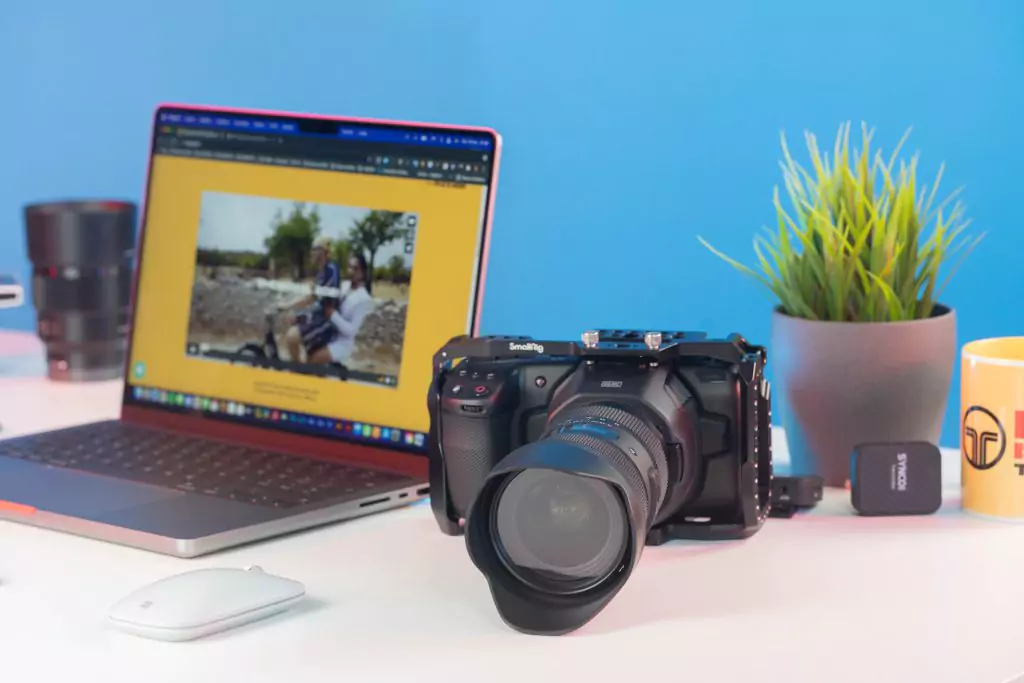
12 Types of Sales Videos you Should try in 2023
by Oliver Goodwin | January 6, 2023
Reading Time: 10 minutes

The importance of videos in marketing can never be overstated. With videos, marketers can conveniently increase leads, sales, traffic, product understanding, engagement, and dwell time. Videos also help marketers reduce support calls while increasing brand awareness and improving their business ROI.
But if you could target videos for potential clients to highlight all the vital properties of your products and services, would that not be cool? This act is effective because it comes across to the prospect as a personalised video designed to cater to their needs, invite conversations, and teach your audience to troubleshoot their problems. Videos of this type are called sales videos.
This article will guide you towards a better understanding of sales videos. By the end of this article, you will have learned about the following:
- The 12 types of sales videos that you should know.
- Why you should use different types of sales videos.
- Big brand popular sales video examples.

The 12 Types of Sales Videos to Make for Your Business
There are different kinds of sales videos, and each of them is suited for a specific purpose or application.
1. The Screen Share Video
A screen share video records every detail your prospects need to know about your products/services. They are perfect for explanations and for walking your prospects through your products. If you want to establish client-product compatibility, screen-share videos are your best bet. You can review prospects’ profiles while explaining why your products are perfect for them. Follow these steps to create a screen share video of your product:
- Sketch out your ideas: This is a quick rundown of how you want the video to be in a temporal order.
- Choose the software you want to use: There are two ways to go about this—with or without a third-party app. Mac OS and Windows OS have their guidelines. However, if you are opting for a third-party app, this is a list of the best screen recording software you can install.
- Record and edit your video: This involves taking a continuous snapshot of your products and your prospects’ pages, fixing pauses where necessary, and removing distractions. Before you edit your video, ensure to play it once or twice to carefully study faults and how to fix them.
2. The Webcam Video
In the webcam video, you, the salesperson, record yourself talking to your prospects in front of your camera. This video is also known as the selfie video. This option is perfect for you if you aim to introduce yourself or get personal with your prospects. Because your face is partly the subject of the video, it is easier to express emotions—which are great for humanizing your brand and bringing your prospects closer.
When recording a webcam video, a failproof tip is to have a clean, well-lit background. Make each word of your message count as they build up to what your products and services aim to do for them.
3. The Personalised Video
If you got an email from a marketing team with your name and interesting facts about you, would that not increase your chances of purchasing whatever the marketing team is trying to sell? Now imagine this advantage in combination with the already listed benefits of video marketing. The synergy would be immense. This is what you get when you create personalised videos for your prospects.
When you send personalised videos to your prospects, you increase your chances of customer conversion. Personalised email videos, for instance, increase click-through rates by eight times. But as a marketer, creating personalised videos for your many prospects can be daunting, so what do you do?
If the prospects are few, it is ideal that you record a video for each. Here you can call each prospect’s name or hold up a placard with their names on it, mention a few interesting facts about them and their company, and talk about how your solutions are designed to address their challenges.
However, if you have too many prospects to reach out to, automating your video creation (using AI to create as many videos as possible within a short period) is a brilliant option. Using a templated format is another adequate option. In this method, an existing video template is edited to accommodate as many versions of you talking about each of your prospect’s personal life and business.
4. The Video Playlist
This is a compilation of all the sales videos you or your brand’s marketing team recorded. This library may be homogeneous (comprising sales videos of the same kind, such as personalised videos) or heterogeneous (comprising sales videos of different kinds, such as a mixture of personalised and webcam videos).
When compiling your video playlist, one good thing to keep in mind is to pilot it with a personalised or webcam video where you address your prospects. In this pilot video, you let your prospects know what the other videos are about and what to anticipate in the library.
Furthermore, take note of questions your prospects might have or have asked in the past and provide answers to them using the subsequent videos. Try to keep the other videos concise and relevant.
Finally, ensure that the videos follow a sequence or a plot unity where one video leads to the other. How do you do this? By including a call-to-action (CTA) at the end of each video. This CTA could be in the form of a question that the next video answers, an open-ended discussion that can only be closed by the next video, or a button such as “NEXT” that the prospect clicks.
5. The FAQ Video
A video that answers prospects’ questions in advance is called the FAQ video or the 80% video. It is called the 80% video because it answers questions that are commonly asked about 80% of the time. Therefore as a salesperson, the first step you take when creating this kind of sales video is being observant and noting down questions that people typically ask most of the time.
How is this of benefit to you? First, it builds trust between you and your prospects, especially when the video is personalised. When prospects see how much effort you have invested in taking into account their pain points and how you have preemptively sated their question hunger, they want to listen more.
Moreover, while text FAQs exist, 73% of customers say they’d rather watch a video. So how do you create a good FAQ video? Follow the guidelines below:
- Conduct your research and write down six commonly asked questions. Provide short and relevant answers to these questions.
- Write your script and choose the kind of sales video you want to present it with. Do you want to personalise it? Is it a webcam? Do you want to share your screen?
- Record your video, and ensure to add personality—because personality is the bone of your videos.
- Share your video.
6. Product Videos
A product video is a promotional video that displays your product and demonstrates how it works. A product video can be a teaser, which advertises the product by appealing to consumers’ taste; a demo, which showcases the utilisation of the product and all of its applications; or an explainer, which discusses what the product is and how it works. A product video can also be all of these three options depending on the aim, budget, and audience.
How do you create the perfect product video? The following pro tips will guide you.
- Understand the market, the trends, and your prospects.
- Determine the kind of product video you want to create. Is it an explainer? A demo? Or a teaser? This usually depends on the problem you are hoping to solve, your audience, or your budget.
- When shooting, consider all possible angles from which the product can be seen.
- Add size and function perspectives to give prospects a basis for comparison.
- Include CTAs such as a phone number to call, a web address to visit, a barcode to scan, etc. With CTAs, your prospects become active participants rather than passive viewers.
7. Personal Bio Videos
Personal bio videos are an avenue for you and your team members (if you have one) to humanise and talk about yourselves. This will help you increase brand loyalty and get prospects to connect more with your brand.
Oft-times, potential clients see salespersons as robots who are only out there to get a product sold. Shooting a personal bio video minimises this notion by a considerable degree because it paints the salesperson in a less robotic light. A personal bio video typically has the marketer’s information, such as their name, roles in the company, off-duty activities, why they do what they do, and other interesting but relevant facts about them.
Personal bio videos also help prospects easily identify you and your team by fostering familiarity between them and you. Personal bio videos are made to disrupt and correct this notion to a considerable degree because it paints the salesperson in a less robotic light.
A personal bio video typically contains the marketer’s information, such as their name, roles in the company, off-duty activities, why they do what they do, and other interesting but relevant facts about them.
These videos also help prospects easily identify you and your team by fostering sufficient familiarity between them and your face.
8. Social Proof Videos
Social proof videos are almost the verbal version of product videos. Whereas a product video showcases the physicality, utilisation, and benefits of the product in action, a social proof video gets beneficiaries of a product to talk about these properties. To summarise, a social proof video is a product video that is painted with words.
Consider the effect of testimonials, similar to how the reviews of a product influence your decision to purchase the product or not. Potential customers relate best with the journey of existing customers, and this video grants you the opportunity to leverage this. The first step to creating an excellent social proof video is obvious but often overlooked—develop a product so good that customers will be willing to talk about it.
Once you have hacked this, you can have happy customers talk about your product for a minute in front of a camera. There are three major kinds of customers who wield enough influence to sway prospects:
- Experts
- Celebrities
- A couple of everyday users
The number of testifiers you decide to use depends on the kind. For instance, you require as many experts or celebrities as everyday users to talk about your products before influencing your prospects.
9. Team Intro Videos
A team intro video is similar to a personal bio video. The difference between the two videos is in the modes of transmission. A personal bio video can be featured using only methods such as a webcam or personalised video where the salesperson or each marketing team member introduces themselves. On the other hand, a team intro video can be executed by one person who introduces and talks about everyone on the team. It can be in the form of a voiceover where light focuses on each member or even as a shared screen of the “About Us” page with an accompanying voiceover.
10. Educational Videos
Educational videos are intended to instruct on how to use a product. For instance, a video that guides prospects on correctly applying a skincare product or instructs customers on how to assemble the pieces of a newly purchased camera are all educational videos. The following steps guide you on your path to creating an excellent educational video:
- Be clear on the product you want to shed light on.
- Choose a mode of delivery. Do you want to share your screen? Record a product video? Or a webcam video? For this, a webcam video where you explain in detail is an ideal option.
- Record and edit your video. Double-check to see that all possible questions are answered.
11. Landing Page Videos
A landing page is a singular page purposed for advertisement and for eliciting a response (through CTAs) from users. These CTAs can include email forms, sign-up forms, home address forms, product exploration buttons, etc.
However, users get sceptical about clicking or releasing their private information. A landing page video deals with this by explaining to the prospects what their action is about and how it benefits them. Incorporating landing page videos into your website can increase your conversion rates by 34%.
12. Case Study Videos
A case study video is used to convince prospects of the potential benefits that they can derive from using a particular product. These videos usually feature:
- Customers’ user journeys.
- Customers’ success stories.
- Statistics that demonstrate these stories.
- Advantages of using the product.
- Scenarios of improved life for the prospects.
Related Article: How to turn your articles into videos

Why Should You Use Different Types of Sales Videos?
The different types of sales videos are purposed for specific applications. As a marketer, you should know the applications of each and how to leverage the combination of multiple sales videos. Read on to know why you should use the different types of sales videos:
- Synergy: some sales videos require other types to come alive. To record a personal bio video, for instance, you need to first record a webcam video.
- Wider reach: the main essence of conducting market research is to know what your audience wants. Sometimes, your audience may be split into multiple units across preference lines who find different types of sales videos appealing. To satisfy them, you have to deploy different sales video types.
- More applications: a product video is more suitable for teasers, demos, and explainers, not for landing page explanations. Similarly, you cannot apply a landing page video to creating a product video.
Big Brand Popular Sales Videos Examples
1. LYFT
This sales video by LYFT demonstrates how powerful a social proof video can be. It appeals to the emotion of prospects by telling a story about the professionalism and kindness of its drivers.
2. Outreach
This Outreach sales video is a perfect illustration of how different types of sales videos can work together to achieve a greater purpose. It combines the screen share video, webcam video, and product video.
3. Apple
In this video, Apple mixes the screen share, personalised, and product video by targeting their teaser at people with disabilities.
4. Google
This is the first example of a team intro video. Google’s Doodle team are seen talking about themselves and what they do.
5. Microsoft
Microsoft has always been known for its great teasers, but they take it to another level in this video. By combining the power of screen imagery to case study video, they give us a scenario of how the future looks with Microsoft Edge.
Wrap Up
Videos have been proven repeatedly to be indispensable to the future of marketing. However, while videos are a class of marketing strategies, they exist in different forms.
There are about 12 types of sales videos, all of which have their unique applications. Their uniqueness, however, does not make it impossible for a coalition to occur between two or more sales video types.
This is why marketers should identify all the nuances that separate the sales video types from one another. This article exists to do justice to that and to help marketers discern how, when, and where to apply the different sales video types.



